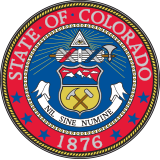
Second Regular Session | 74th General Assembly
Colorado General Assembly
Subjects
Education & School Finance (Pre & K-12)
Fiscal Policy & Taxes
Local Government
State Revenue & Budget
Agency
Agency
Published
04/12/2019
The final Residential Assessment Rate (RAR) Study released by the Division of Property Taxation (DPT) on April10, 2019,estimates anRARof 7.15 percent for property tax years 2019 and 2020. The General Assembly would have to pass a bill for this rate to become law. The anticipated assessed values associated with this study have a significant impact on the local share for school finance. Compared with the December 2018 Legislative Council Staff assessed value forecast, the local share for school finance (local share) with a residential assessment rate of 7.15percent increases by $107.6million in FY2019-20. The actual local share will depend on the accuracy of the forecast and the RAR set by the General Assembly.